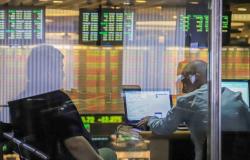He free dollar earns 25 pesos or 1.9% this Tuesday, $1,305 for sale, a new nominal maximum. As far as June rises 80 pesos or 6.5%a rate that is expected to exceed inflation for the period, a trend that had already been observed in May, with a 17.8% rise in the informal currency against 4.2% in the INDEC Consumer Price Index.
With a wholesale dollar at 906 pesos, the exchange gap with the wholesale dollar -at $905- it now reaches the 44.2%in the highest range since February 1 (44.5%).
Which are the factors What motivates this renewed bullish streak for the banknote?
1) Seasonal factors. There are reasons for greater demand in the short term. A “ultra short” financial week could lead savers and investors to take positions in currencies, given the holidays of Monday the 17th, Thursday the 20th and Friday the 21st. To these dates we must add the holiday in the US on June 19, which always influences domestic operations. With no reference operations for the market practically until Monday, June 23, hedging in currencies is an option.
There is also a demand that puts pressure on the price of the greenback in the alternative segments, given the payment of the half bonus for formal employees, since a surplus of that liquidity is suitable for being converted into foreign currency, as is the seasonal demand prior to the Winter Break. In the latter case, given a much higher public price of the dollar in the formal market – around $1,510 in the average sale in banks -, it is more convenient to obtain banknotes in the parallel market – at $1,305 – or dollar MEP -at $1,244- to cover card consumption in foreign currency.
2) Negative rates for fixed terms. In recent months, the BCRA deepened the downward adjustment to the monetary policy rate, to establish it at 40% nominal annual rate. In this sense, since March the monetary authority decided to release the fixed-term rate with which commercial banks remunerate their clients’ deposits; These are now around 30% annual nominal, which in effective terms leaves a return of 2.5% as monthly effective rate. This negative rate in real terms, in the face of monthly inflation still above 4%, drives some savers and small merchants and businessmen to put their savings into the purchase of dollars, to better preserve the value of their holdings.
3) Relative delay. In recent days there has been a lot of talk about the horizon for exiting the exchange rate “trap”, which if it occurs in the coming months would have the endorsement of the International Monetary Fund (IMF). This exchange rate unification is accompanied by a huge question: what will be the exchange rate of a dollar without official control. Given that the “blue” dollar and financiers register a profit close to 30%and the official exchange rate advances only 11.9%, placing part of the available capital in dollars may be considered convenient in the face of a inflation close to 80% in the period, facing a horizon of exit from the “traps” with exchange rate unification included.
Juan Manuel FrancoChief Economist of the SBS Group, expressed that in the last staff reportthe IMF “this time they did make reference to the need for a positive real rate in pesos, key when thinking about a normalization of the exchange market. In this sense, they said that by July the Government should present a roadmap to remove them, while adding that in July the ‘dollar should end blend‘”.
“It is important that a greater pace of settlements be resumed that allows the BCRA’s recent purchases – which come with a more irregular behavior – to be improved, still taking advantage of the favorable seasonality, before a second semester usually with lower supply of foreign exchange,” said the economist Gustavo Ber.
“The expectation of positive real rates would also be contributing to the calm stage among financial dollars, still circling below $1,300, since operators are leaning towards a break in the current economic-financial context after the last realignment” , said the head of Estudio Ber.






